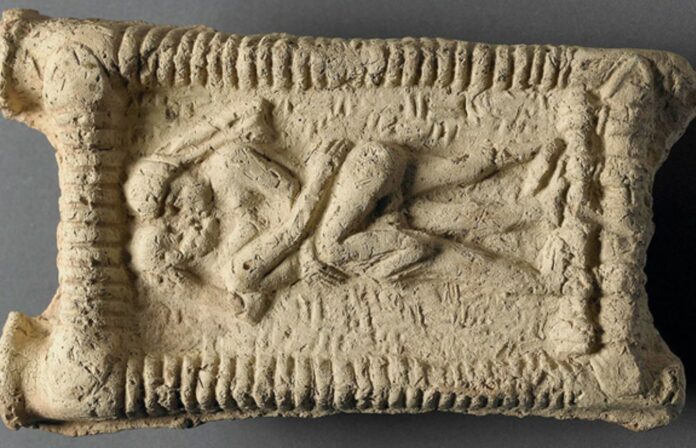When did Humans start lip Kissing?
The first kiss known to history happened in Mesopotamia around 4,500 years ago, according to new research. This age-old display of affection was common among ancient Middle Eastern civilizations, as revealed in a recent article co-authored by scholars from the University of Copenhagen and the University of Oxford.
The revealing study was published in the Science journal, shedding new light on the historical practices of human intimacy.
A recent study suggested that the first instances of human lip-to-lip contact, or kissing, can be traced back to South Asia 3,500 years ago, and this social custom could have facilitated the spread of the herpes simplex virus 1 to different regions.
However, in the new study, Dr. Troels Pank Arbøll and Dr. Sophie Lund Rasmussen offer a new perspective based on various historical records from the earliest societies in Mesopotamia. According to them, the act of kissing was already a prevalent practice in the Middle East as far back as 4,500 years ago, and possibly even earlier. This pushes the oldest known evidence for kissing back by an additional thousand years, compared to the previously accepted timeline in the scientific community.
“In ancient Mesopotamia, which is the name for the early human cultures that existed between the Euphrates and Tigris rivers in present-day Iraq and Syria, people wrote in cuneiform script on clay tablets. Many thousands of these clay tablets have survived to this day, and they contain clear examples that kissing was considered a part of romantic intimacy in ancient times, just as kissing could be part of friendships and family members’ relations,” explains Dr Troels Pank Arbøll, an expert on the history of medicine in Mesopotamia.
“Therefore,” according to him, “kissing should not be regarded as a custom that originated exclusively in any single region and spread from there but rather appears to have been practiced in multiple ancient cultures over several millennia.”
“In fact, research into bonobos and chimpanzees, the closest living relatives to humans,” adds Dr. Sophie Lund Rasmussen, “has shown that both species engage in kissing, which may suggest that the practice of kissing is a fundamental behaviour in humans, explaining why it can be found across cultures.”
Kissing, while recognized for its significant role in human social and romantic interactions, could inadvertently contribute to the dispersal of microscopic organisms, potentially facilitating the spread of viruses among humans.
However, the proposition that a kiss could act as an instant biological catalyst, initiating the dispersion of specific pathogens, remains more questionable. This theory is highlighted with the example of the herpes simplex virus 1, which some researchers speculate might have propagated faster with the advent of kissing practices.
“There is a substantial corpus of medical texts from Mesopotamia, some of which mention a disease with symptoms reminiscent of the herpes simplex virus 1,” adds Dr. Arbøll.
He underscores the fact that early medicinal manuscripts were shaped by diverse cultural and spiritual ideas. Consequently, it’s vital to stress that these texts should not be interpreted literally or taken at surface level.
“It is nevertheless interesting to note some similarities between the disease known as buʾshanu in ancient medical texts from Mesopotamia and the symptoms caused by herpes simplex infections. The bu’shanu disease was located primarily in or around the mouth and throat, and symptoms included vesicles in or around the mouth, which is one of the dominant signs of herpes infection.”
“If the practice of kissing was widespread and well-established in a range of ancient societies, the effects of kissing in terms of pathogen transmission must likely have been more or less constant,” adds Dr. Rasmussen.
In their concluding remarks, Dr. Arbøll and Dr. Rasmussen emphasize the importance of an interdisciplinary methodology in further research into ancient DNA. They believe this will yield results that will spark comprehensive dialogues around the complex evolution of society and interactions, such as the role of behaviors like kissing in early disease spread.
Source: 10.1126/science.adf0512
Image Credit:
